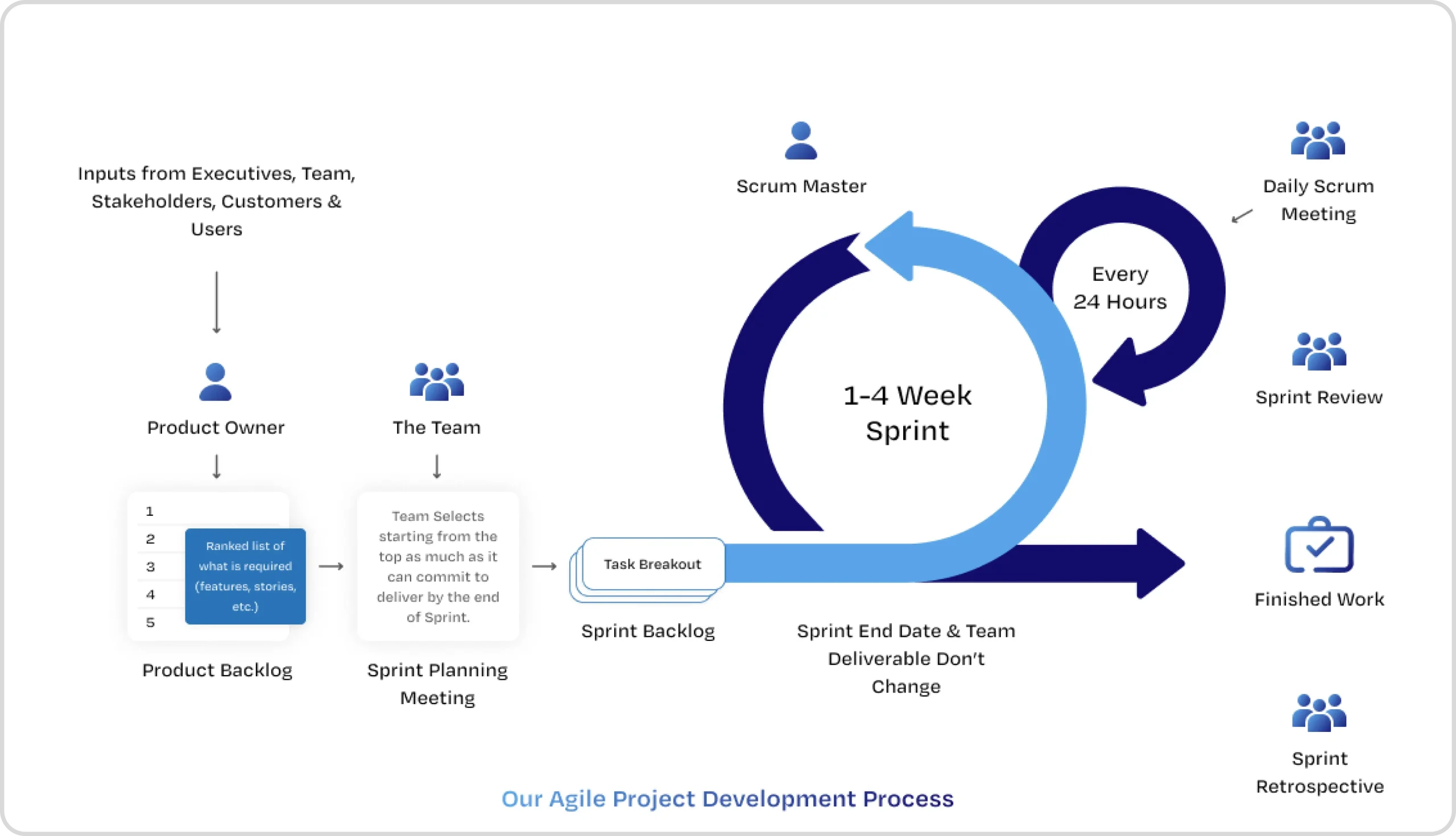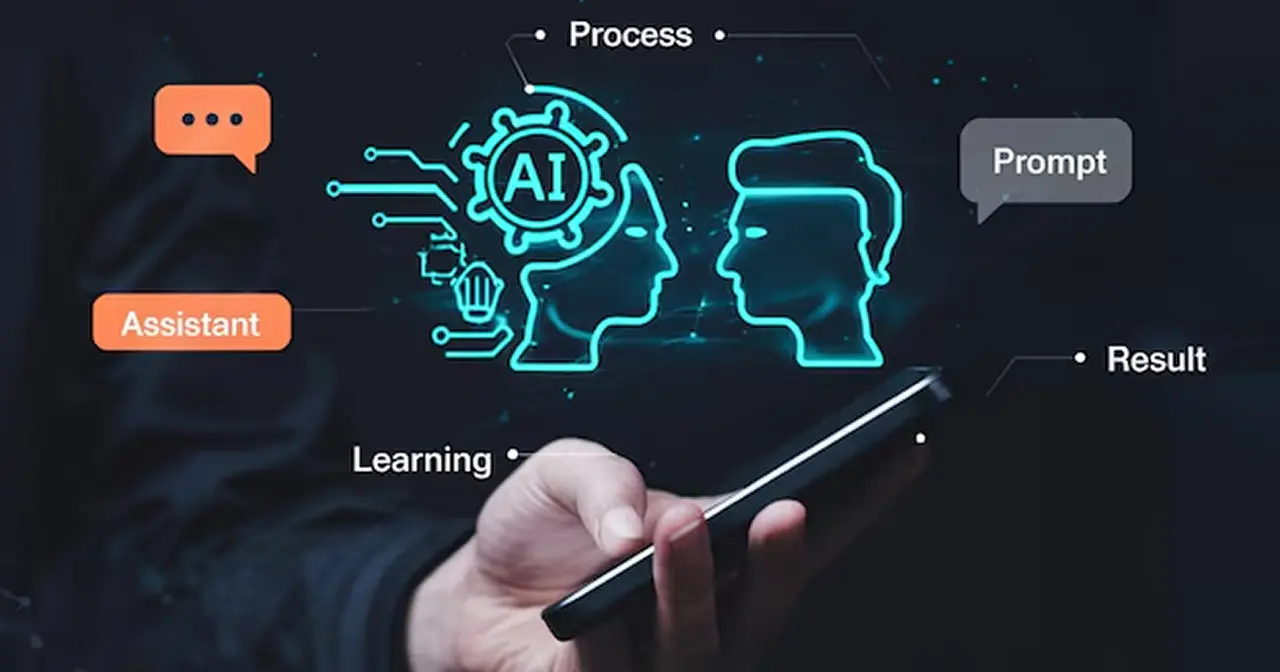Agile: Understanding The Core Principles of Agile Methodology

The term “Agile” is widespread in the domain of project management, but what does it mean? This goes more beyond a single term. It signals a holistic change in a project approach towards more collaboration, improvement, and flexibility as the central characteristics. In this blog post, we explore the Agile core processes for its structures, pillars and methodologies to give complete insights into its world.
What is AGILE?
Agile Methodology is an iterative and incremental approach to project management and software development with an emphasis on getting value out to customers quickly, incorporating feedback quickly as well as changing as needed. Agile is adaptive to changes as they come with no rigid structures and sequences. These approaches are critical in modern-day fast changing environments where there are near constant changes and competition.
Core Principles of Agile
Four primary values and twelve principles core to the methodology are stated in the Agile manifesto. Among them, the following are the most salient. Agile teams are guided by these principles towards the decisions that they make and the actions they take.
- Customer Focus: Agile places great emphasis in understanding customer needs while creating a product and making sure feedback is received during the project so that the ultimate end goal can be met.
- Embrace Change: With Agile, requirements and policies can change at any time and being adaptable to these changes is particularly useful in this age of fast moving business environments.
- Fast and Frequent Delivery: The Agile Methodology breaks down the process of development into components and instead of planning for a full-fledged system, they prefer iteratively building working software through cycles called sprints. This enables for much-needed feedback very early in the process while also lowering the chances of constructing something unwanted.
- Collaboration: The development team, customers, and stakeholders are always on the same page and in close collaboration that allows them to jointly achieve the desired goals and objectives. Complete communication and understanding serve as foundational principles.
- Continuous Improvement: It facilitates self improvement across teams and processes. Teams have the ability and permission to identify issues, reflect, and change processes accordingly. When done properly, this always leads to improvement in both quality and productivity.
- Team Respect: Agile provides team members with trust and power as it values self-organization. This delegation of responsibility helps create a friendly and efficient atmosphere.
Agile Process:
A general Agile framework is very simple and encompasses planning, sprints/iterations, testing, and maintenance, while specific frameworks like Scrum and Kanban have their own particular processes:
- Planning: Set the broad goals and create a product roadmap which essentially is a living document that is updated constantly as new tasks are identified. All the features that need to be implemented are sorted by priority in the product backlog.
- Sprints/Iterations: Work on the identified tasks in short cycles (e.g., 2 weeks) to work on specific features of the product that are defined in the project backlog. By the end of the two weeks, the goal of the sprint should be met and a working version of the software increment should be put out.
- Daily stand-ups: Short daily meetings for the team to align efforts, know of any issues, and devise a plan for the day. These meetings are aimed at encouraging engagement and openness.
- Review: At the end of each sprint, the team displays its working demo to the client and collects their feedback which is then used to improve the product backlog and decide the next sprint’s plan.
- Retrospective: During this phase, the team analyzes the sprint and finds out how they did in terms of the process and their interactions. This approach is what makes Agile work, a cycle of continuous improvement.
Key Pillars of Agile
Three key pillars support the Agile principles and process:
- Transparency: No single person has control over the project, and a shared responsibility for the success or failure of a project results in open communication and visibility into the progress of the project.
- Inspection: Regular inspection of the work being done and its processes in order to discover problems and solve them proactively. This can be applied to the product increment, the activities of the team, and the project’s progress.
- Adaptation: Response to feedback ideas is also one of the principles of Agile. Changes have to be made after inspection of the feedback concerning the product, the team and project processes, and the project as a whole.
What has led to the popularity of agile?
Agile is popular today because it solves modern project management problems. Customer centricity, flexibility and improvement enables Agile to effectively manage complicated projects in an ever changing world. Agile allows managing complex projects in a complex world. Teams are able to deliver value in record time, eliminate unnecessary steps, and in the end, produce better goods. Agile allows teams to embrace change, foster collaboration, and mitigates uncertainty to ensure positive outcomes. Agile surely makes projects a lot more efficient.
Your vision, our skills. Let’s build your dream product together. Ellocent Labs – Agile development you can trust. Reach Us Today!
Popular Blogs

SEO Trends 2025: Making Your Brand Shine with AIO, GEO, AEO and SXO
The online world is always changing, and 2025 is a big year for how businesses get found on search engines. You might hear some people say, “SEO is dead,” but that’s not true at all! Instead, SEO is simply growing and changing, mostly because of Art...

What are AI agents, and How do They Impact Today Market and Websites?
Advanced artificial intelligence gives autonomous systems their AI agent operation capabilities. These agents differ from standard chatbots because they execute advanced jobs while gaining understanding from user conversations, then respond independ...

Custom Scheduler vs n8n: Which One Should You Choose for Automation?
Automation and scheduling workflows have become essential for businesses looking to improve efficiency, reduce manual work, and ensure timely execution of tasks. Whether it’s running batch jobs, processing data, or automating repetitive tasks, havin...

Pros and Cons of Custom Web Design vs. Template Web Design
The decision between a template and a custom web design is based on your budget, schedule, and business objectives. Custom web designs are tailored to your brand, offering enhanced scalability, security, and long-term growth flexibility. In contrast...

10 AI Testing Tools to Streamline Your QA Process in 2025
In the ever-changing landscape of technology, ensuring software quality has become critical. AI testing technologies are transforming quality assurance (QA) operations by enhancing precision, speed, and efficiency. Here are eleven AI-powered testing...

How Did We Go From Chatbots to AI Agents?
Modern conversational technology experienced a deep technological progression through time, beginning with rule-based chatbots and resulting in advanced AI agents for contemporary use. Artificial systems that used to handle specific keywords have de...
Related Tags
Related Blogs

The online world is always changing, and 2025 is a big year for how businesses get found on search engines. You might hear some people say, “SEO is dead,” but that’s not true at all! Instead, SEO is simply growing and changing, mostly because of Art...

Advanced artificial intelligence gives autonomous systems their AI agent operation capabilities. These agents differ from standard chatbots because they execute advanced jobs while gaining understanding from user conversations, then respond independ...

Automation and scheduling workflows have become essential for businesses looking to improve efficiency, reduce manual work, and ensure timely execution of tasks. Whether it’s running batch jobs, processing data, or automating repetitive tasks, havin...

Custom Scheduler vs n8n: Which One Should You Choose for Automation?
Automation and scheduling workflows have become essential for businesses looking to improve efficiency, reduce manual work, and ensure timely execution of tasks. Whether it’s running batch jobs, processing data, or automating repetitive tasks, havin...

SEO Trends 2025: Making Your Brand Shine with AIO, GEO, AEO and SXO
The online world is always changing, and 2025 is a big year for how businesses get found on search engines. You might hear some people say, “SEO is dead,” but that’s not true at all! Instead, SEO is simply growing and changing, mostly because of Art...

What are AI agents, and How do They Impact Today Market and Websites?
Advanced artificial intelligence gives autonomous systems their AI agent operation capabilities. These agents differ from standard chatbots because they execute advanced jobs while gaining understanding from user conversations, then respond independ...

Custom Scheduler vs n8n: Which One Should You Choose for Automation?
Automation and scheduling workflows have become essential for businesses looking to improve efficiency, reduce manual work, and ensure timely execution of tasks. Whether it’s running batch jobs, processing data, or automating repetitive tasks, havin...

SEO Trends 2025: Making Your Brand Shine with AIO, GEO, AEO and SXO
The online world is always changing, and 2025 is a big year for how businesses get found on search engines. You might hear some people say, “SEO is dead,” but that’s not true at all! Instead, SEO is simply growing and changing, mostly because of Art...
Schedule a 15-Minutes call
Let’s make things happen and take the first step toward success!
Got Ideas? We’ve Got The Skills.
Let’s Team Up!
Let’s Team Up!
What Happens Next?
We review your request, contact you, and sign an NDA for confidentiality.
We analyze your needs and create a project proposal with scope, team, time, and cost details.
We schedule a meeting to discuss the offer and finalize the details.
The contract is signed, and we start working on your project immediately.